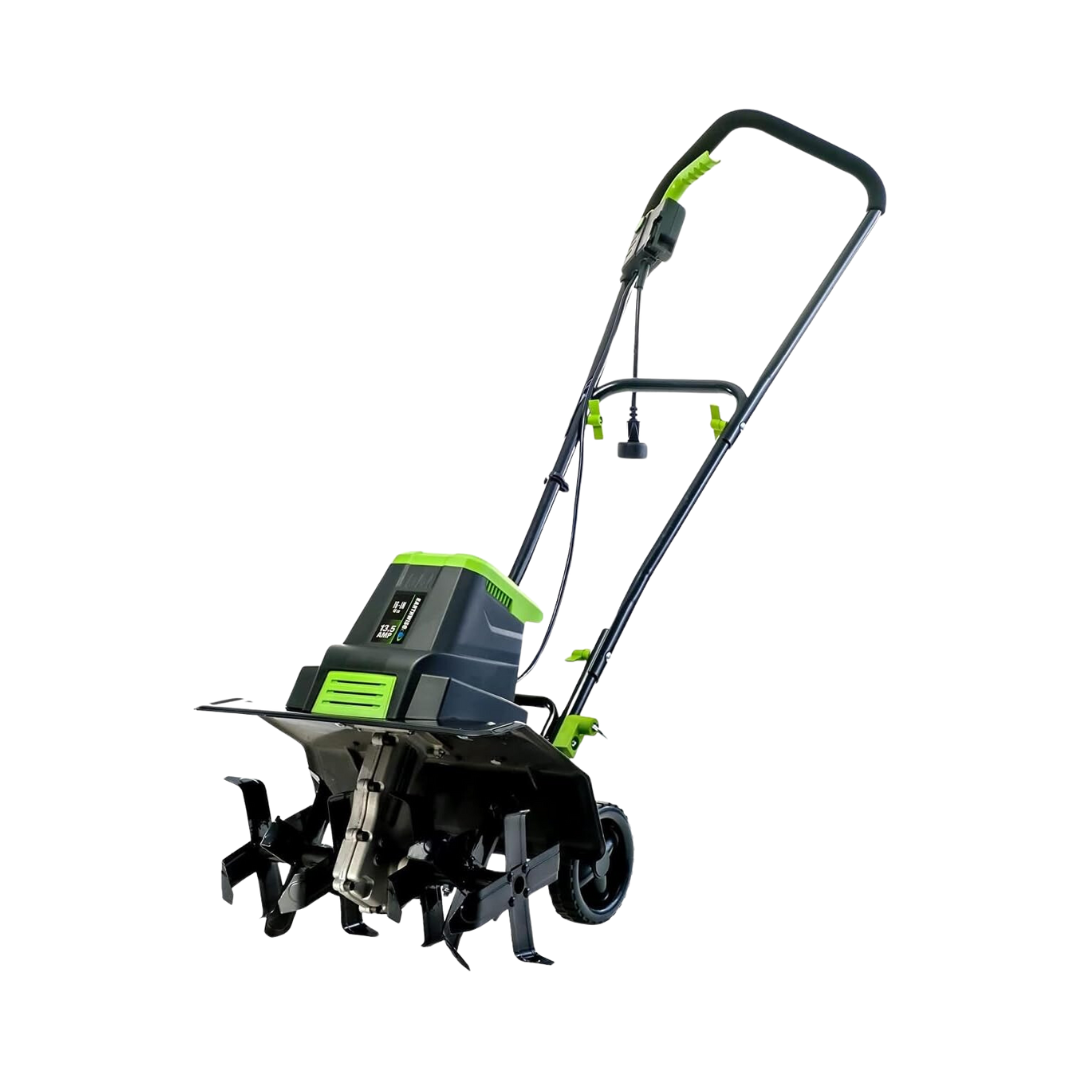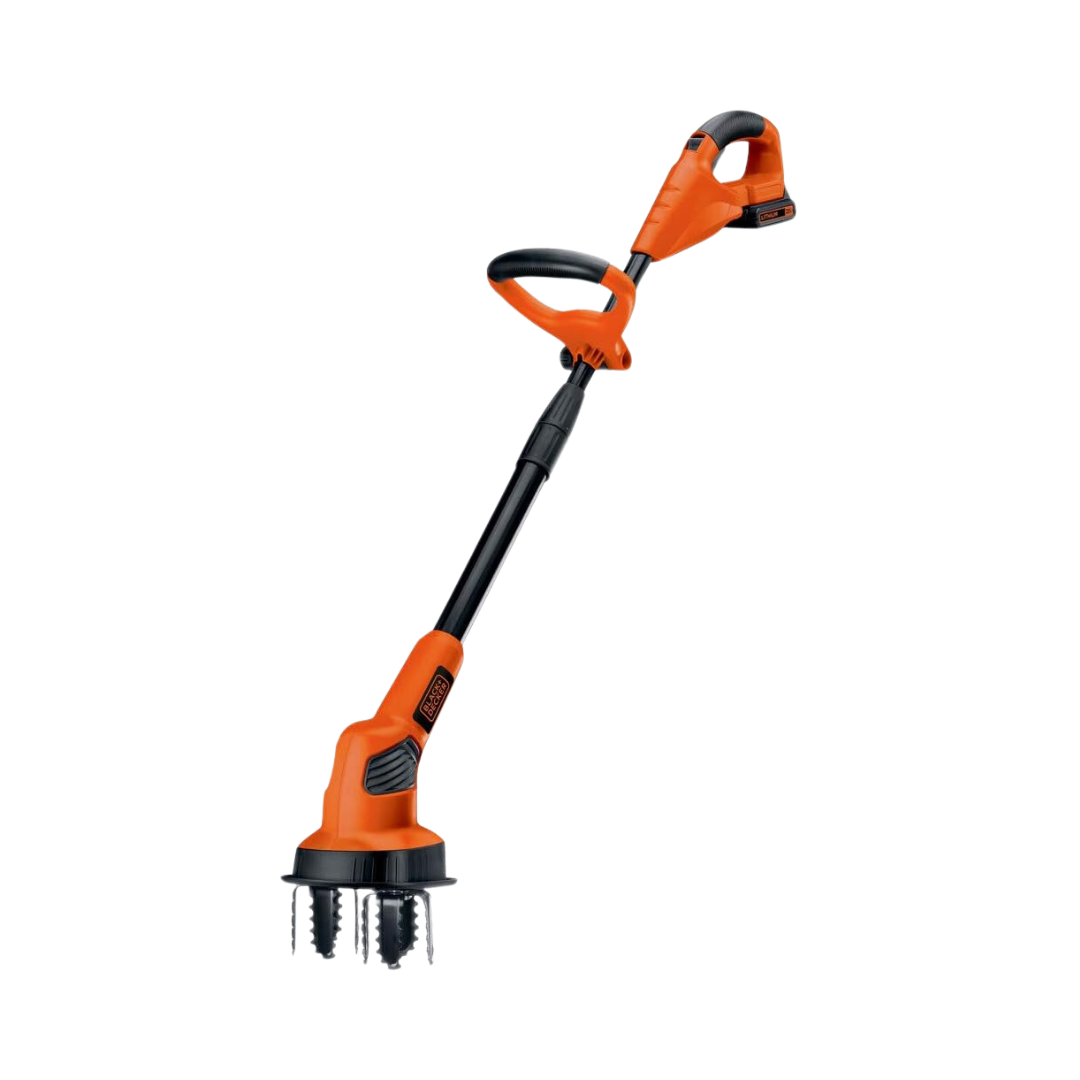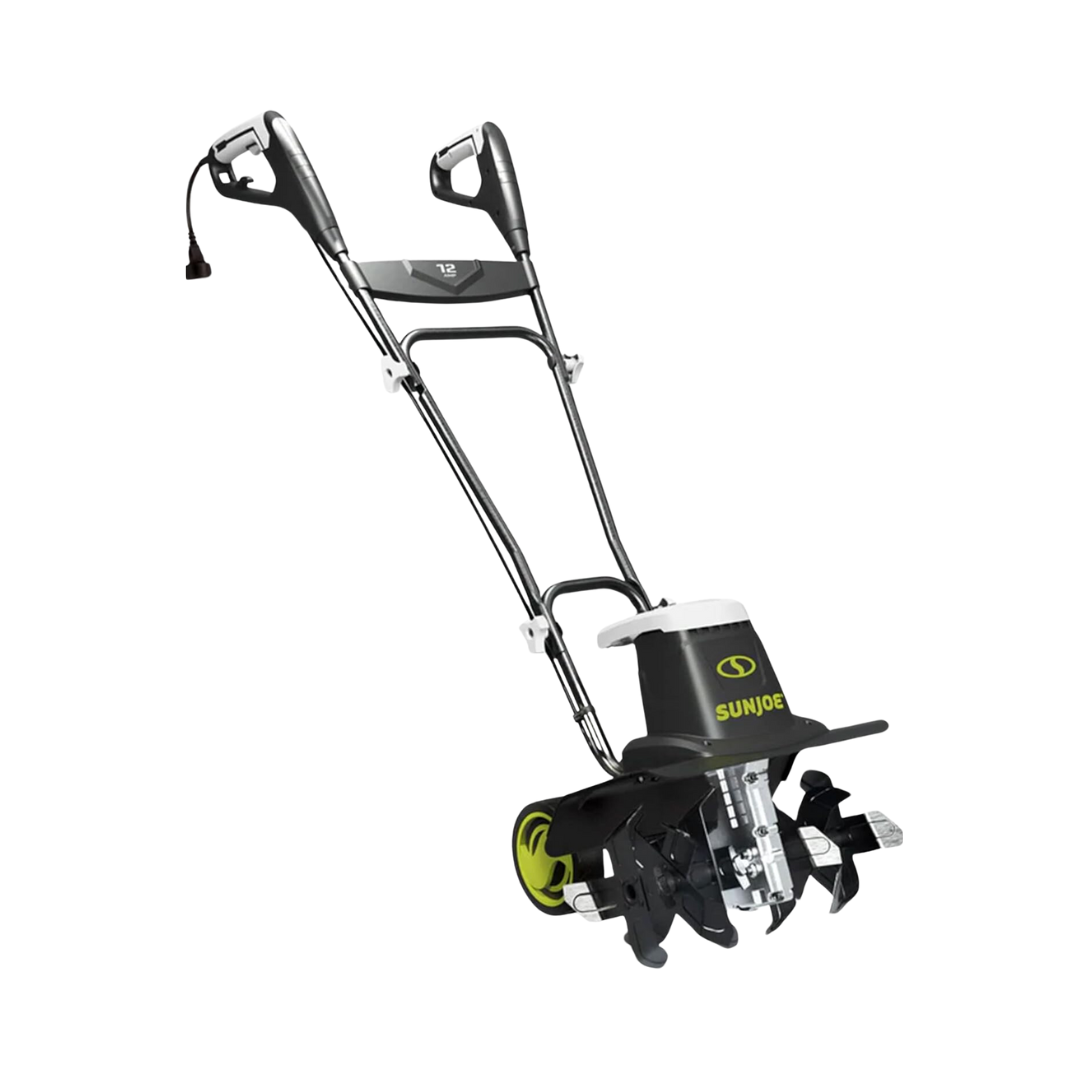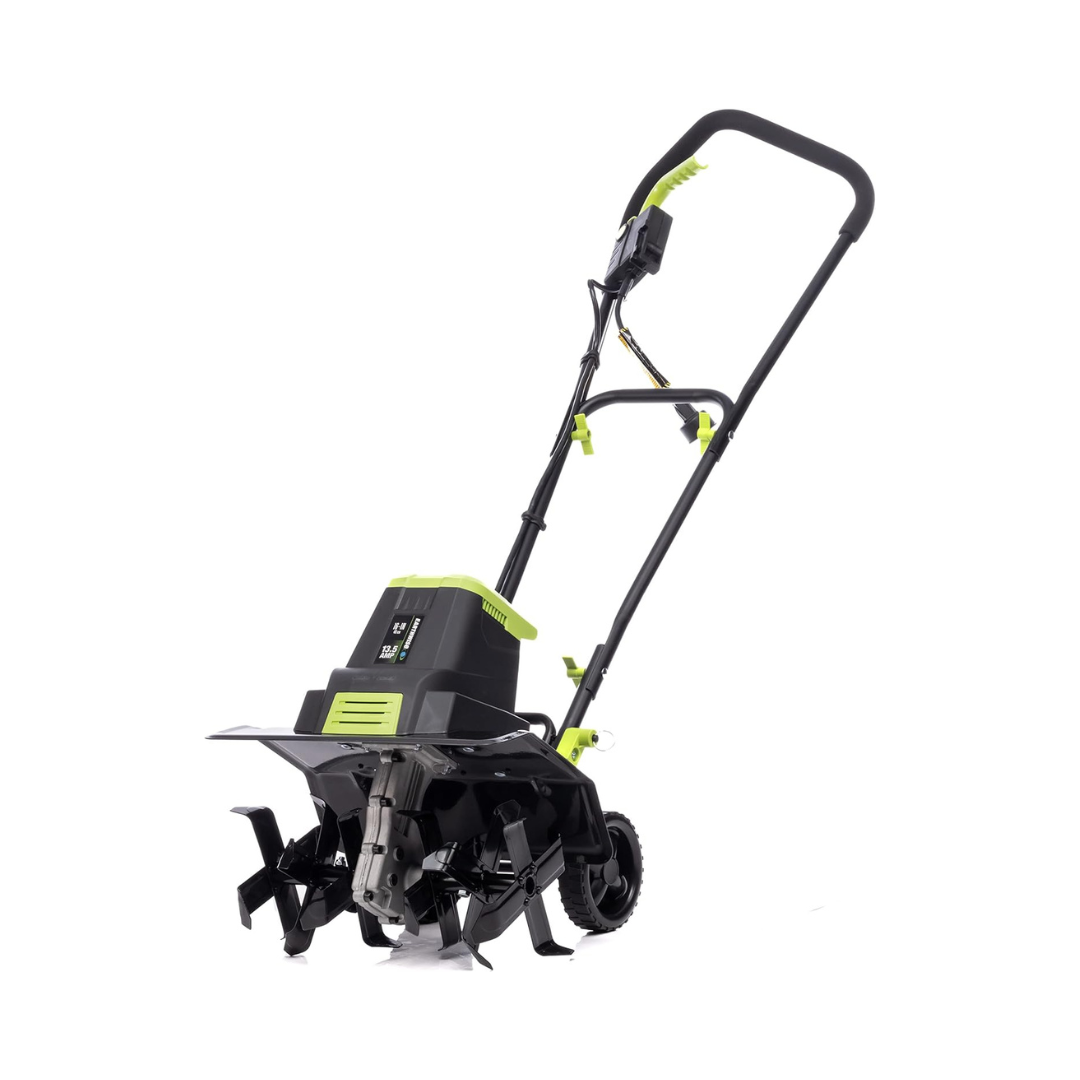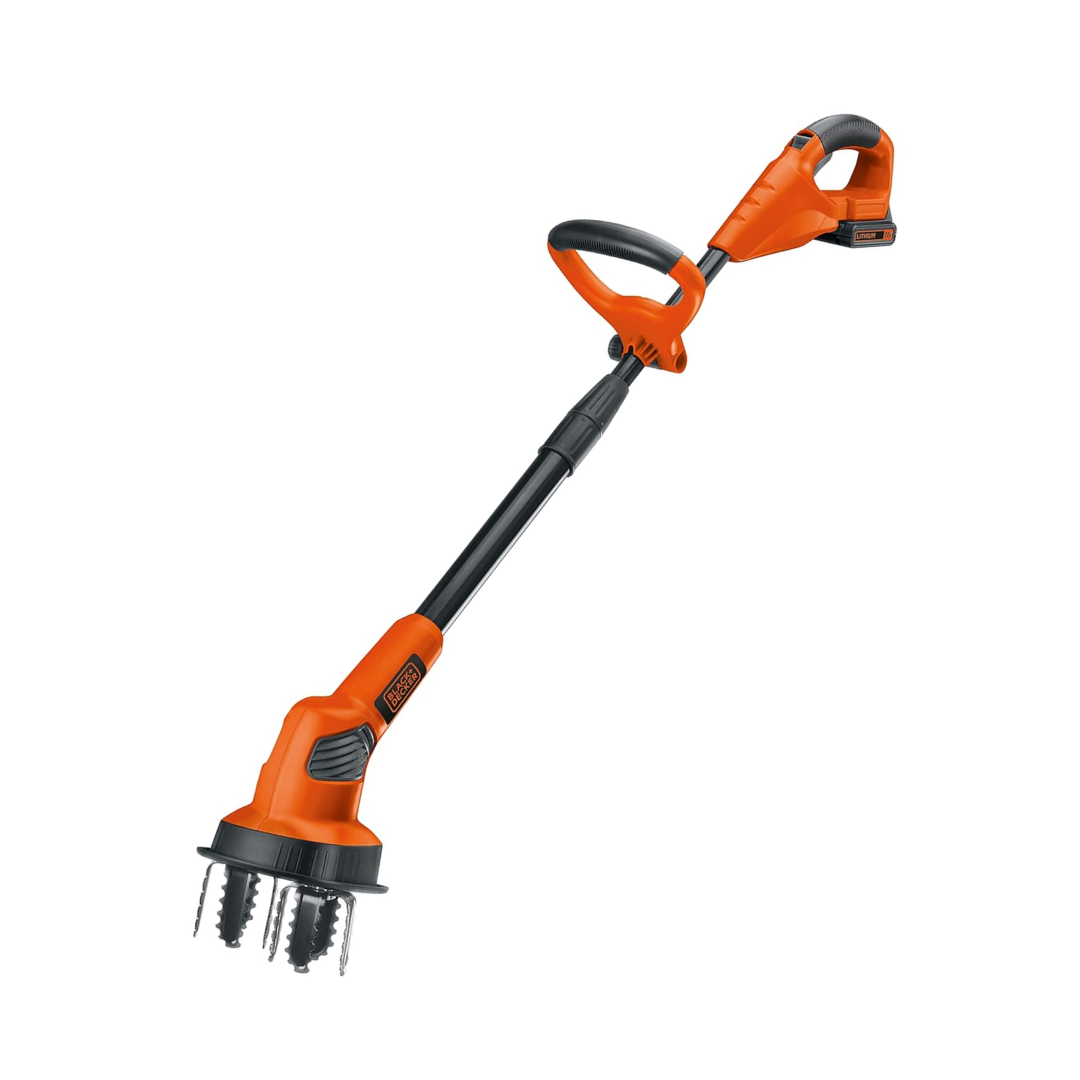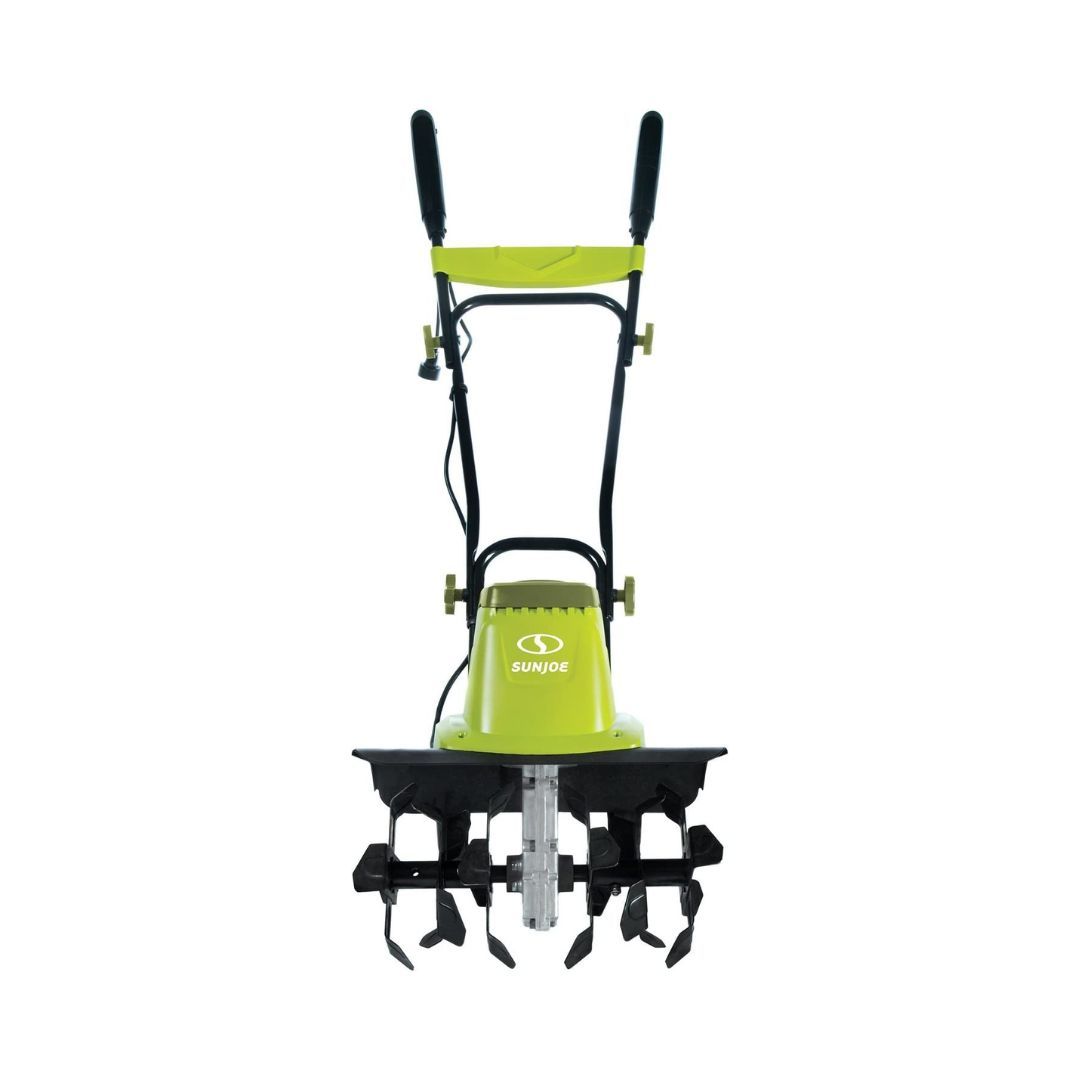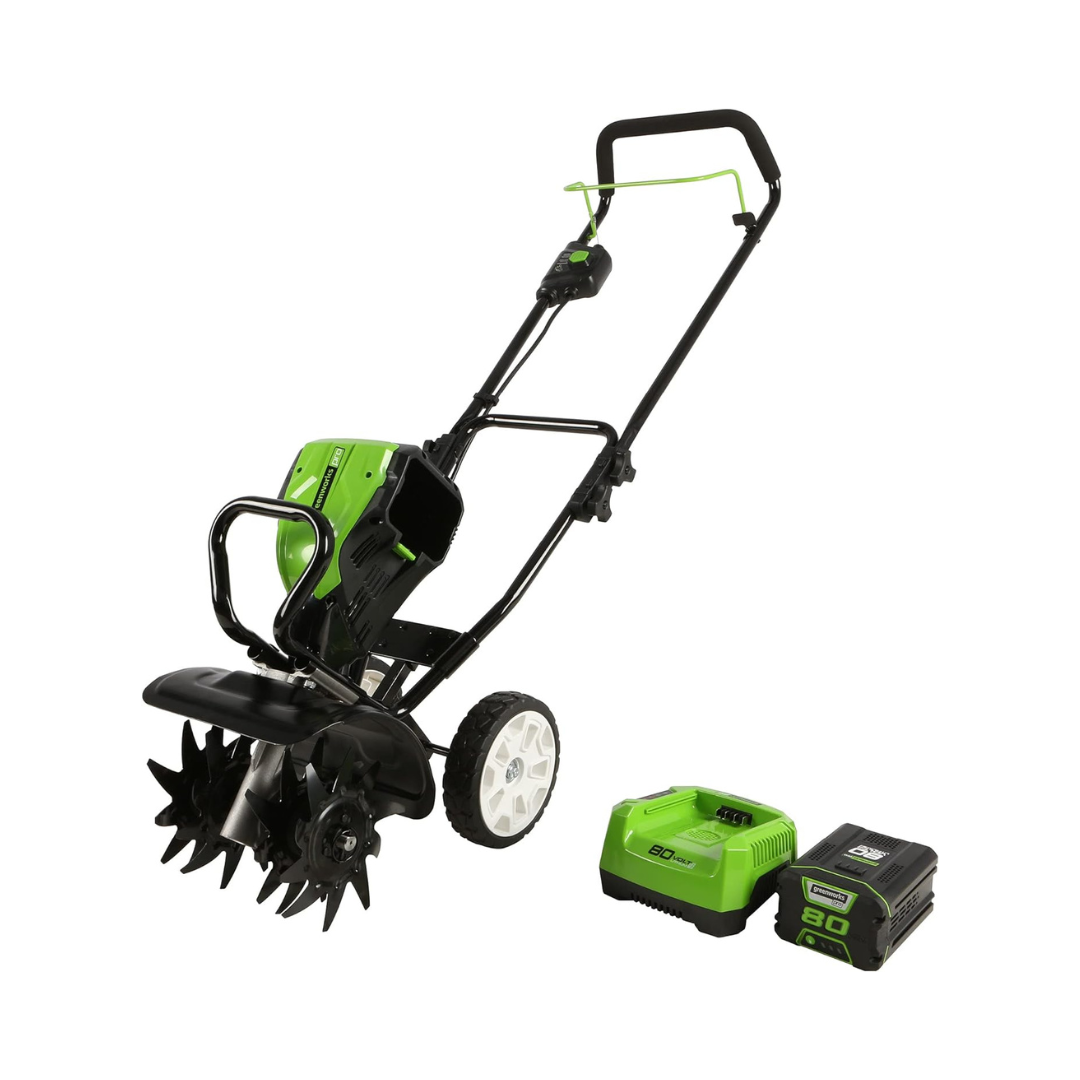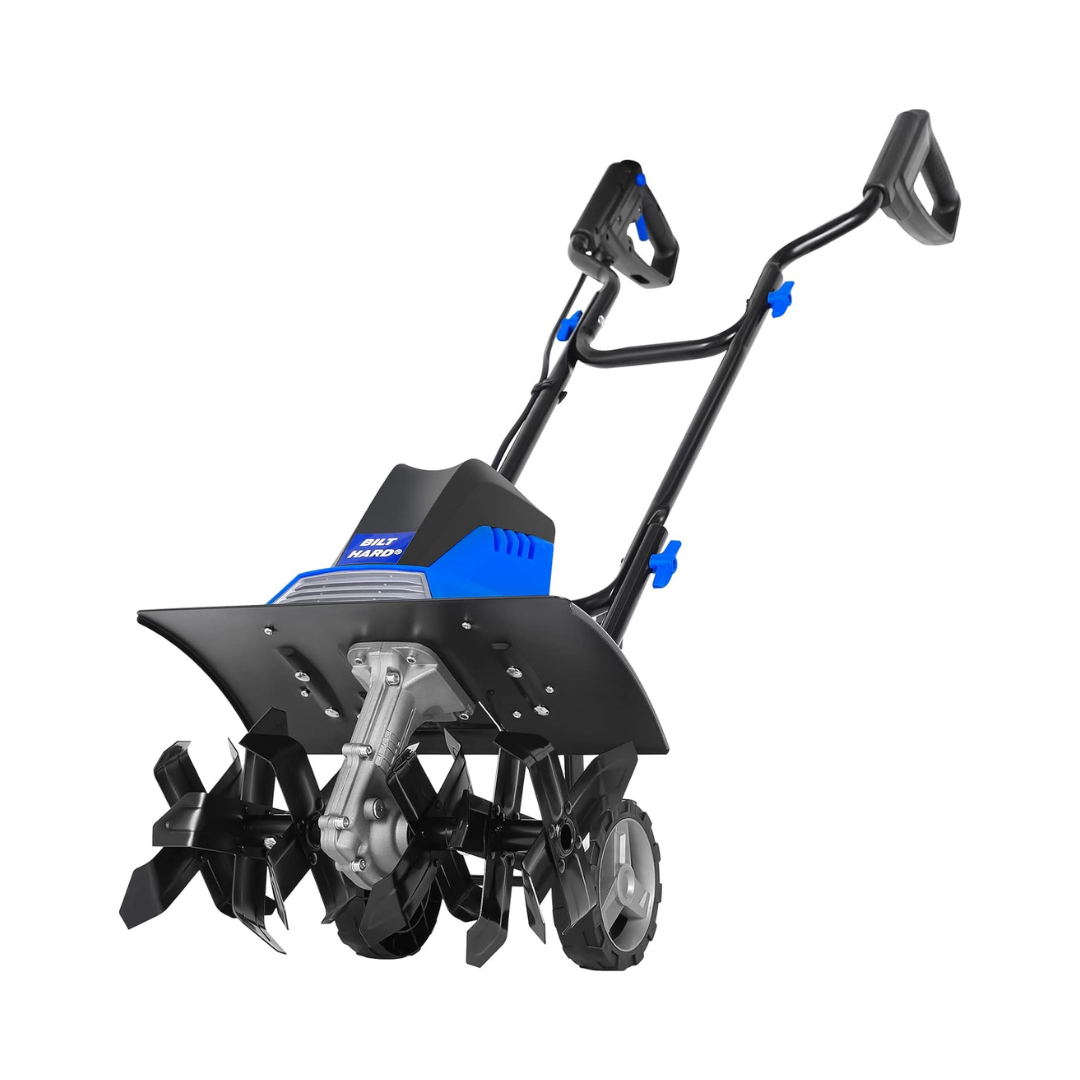We may be compensated if you purchase through links on our website. Our team is committed to delivering honest, objective, and independent reviews on home products and services.
Unless you’re a gardening expert, it might be difficult to know which tiller to purchase to prepare your flower beds. To help you sort through your options, I researched the best tillers on the market to help you find the best product for you. Here are my top pick
Top 5 Electric Tillers
Most Powerful: Earthwise Corded Electric Tiller/Cultivator
Most Lightweight: BLACK+DECKER Tiller
Best Positioning Control: Sun Joe Electric Tiller/Cultivator
Best For Small Gardens: Greenworks Pro 80V 10 inch Cultivator
Most Powerful: BILT HARD Electric Garden Rototiller
Compare Top Electric Tillers
| Product | Weight | Cutting Width | Cutting Depth | Design | Tines |
|---|---|---|---|---|---|
| Earthwise Corded Electric Tiller/Cultivator | 29 pounds | 16 inches | 8 inches | Corded | Six |
| BLACK+DECKER Tiller | 11.7 pounds | Not listed | Not listed | Cordless | Two |
| Sun Joe Electric Tiller/Cultivator | 27.1 pounds | 16 inches | 8 inches | Corded | Six |
| Greenworks Pro 80V 10 inch Cultivator | 44.9 pounds | 10 inches | 5 inches | Cordless | Four |
| BILT HARD Electric Garden Rototiller | 23.4 pounds | 16 inches | 9 inches | Corded | Four |
| Product | Weight | Cutting Width | Cutting Depth | Design | Tines |
Most Powerful
Pros and Cons
✔ Has an ergonomic handle that’s comfortable to hold
✔ Has a retention hook to prevent the cord from getting tangled while you’re working
✔ Includes six adjustable tines
✘ Weighs around 30 pounds
✘ Needs an extension cord to cover large gardens
What Customers Are Saying
Many customers I found during my research liked this electric tiller’s safety features, power, and durability. On the other hand, I also found some users who said that the tines sometimes stopped turning even when the motor was still running.
Most Lightweight
Pros and Cons
✔ Can cultivate up to 325 square feet per charge
✔ Comes with a 20-volt battery and a battery charger
✔ Has counter-oscillating tines that prevent weeds from tangling
✘ Has two tines instead of four or six
✘ Doesn’t have enough power or runtime for large gardens
What Customers Are Saying
Several customers I found in my research were happy with this tiller’s lightweight, compact build that could cultivate small gardens with ease. Some disappointed users wished that it could cover more ground before its battery died.
Best Positioning Control
Pros and Cons
✔ Has a foldable handle for easy storage and easy transport when it’s not in use
✔ Can cultivate up to 16 inches wide and eight inches deep in one pass
✔ Has a powerful 12-amp motor
✘ Doesn’t give you as much freedom of movement as cordless models
✘ Can’t till rocky soil
What Customers Are Saying
I found that customers who were pleased with this electric tiller mentioned that it was easy to assemble and made from sturdy materials. According to some customers, it couldn’t handle rocky or tightly packed soil like gas tillers.
Best For Small Gardens
Pros and Cons
✔ Has a lightweight, cordless design
✔ Features simple push-button start
✔ Has an adjustable cutting width between 8.25 and 10 inches
✘ Has a smaller cutting width than other tillers in this review
✘ Has a higher price point than some gas tillers
What Customers Are Saying
I found that customers who gave this tiller a positive review were pleased with how well it was made from durable materials and was easy to handle and maneuver. Others pointed to its easy start up as a factor they were impressed with. On the other hand, there were some reviewers who felt this product ran out of battery quickly, and some said it didn’t perform well in deep soil.
Most Powerful
Pros and Cons
✔ Has rust-resistant blades that can reach a maximum speed of 360 RPMs each
✔ Features six-inch adjustable wheels
✔ Includes foldable handles
✘ Some customers had issues with the wheels falling off during operation
✘ Has a heavy, bulky design
What Customers Are Saying
I found that many customers praised this tiller-cultivator’s easy assembly and powerful performance. Others also liked that it was well-built and ran quietly. On the other hand, I also saw several customers who had issues with this tiller’s wheels coming off unexpectedly, and others said it overheated.
Buying Guide to Electric Tillers
Whether you’re an avid gardener or hobbyist, an electric model tiller makes turning and loosening soil and mixing compost easier than ever. Renting a tiller is inefficient if you need the machine frequently—the fees add up, transportation is difficult, and you’re on a deadline to return it.
By purchasing an electric tiller, you don’t need to worry about additional fees or pressing deadlines, and the only place you need to transport it to is your garden. Below, we explain some of the top elements to consider when you’re buying an electric tiller for yourself.
Tines
Electric tillers usually come with four tines, though you can also find models with two or six tines. The tines are typically in the rear, center, or front of the machine. Rear-tine tillers are powerful, so they’re useful for heavy soil. Meanwhile, front tines are lighter and easier to maneuver. These are the most common type of tines on electric tillers. Finally, center-tine tillers are the least common, but they provide a balance between the power of rear-tine tillers and the maneuverability of front-tine tillers.
Size
Larger, wider tillers require fewer passes through your soil. However, the bigger a tiller is, the more cumbersome it is to operate and maneuver. Most tillers are in the 10-to-20-inch range in terms of length. Some are even adjustable, giving you more customization based on whether you need more power or more mobility.
Speed
Revolutions per minute (RPM) measures the speed at which the tines move. The higher the RPM rating, the quicker the machine churns the soil. Anything approaching 200 RPM works for the majority of soils, but some devices can go as high as 400 RPM.
Power Source
Electric tillers are either corded or cordless. Corded models are more powerful, but they’re less flexible in terms of where you can use them because they plug into a wall outlet or extension cord.
Cultivators vs. Tillers
If your garden is already established and requires light maintenance, consider a cultivator. It’s also lightweight and compact, which is useful if you have limited strength and mobility.
A garden tiller is better for heavy-duty projects. It provides more power than a cultivator, so you can use it to establish gardens of all sizes or maintain medium and large gardens.
Electric Tiller Uses
An electric tiller can serve many purposes. Below, I’ve highlighted some of the most useful functions an electric tiller can serve in your yard.
Breaking Ground
An electric tiller can tear up last year’s garden and add mulch in preparation for this year’s planting season. You can also use it to plow through hard soil when you’re starting a new project from scratch.
Tending
Existing gardens require ongoing attention. An electric tiller can turn the top layer of soil to ensure that nutrients are reaching the roots of your plants.
Weeding
Having a weed-free garden is key to productive, healthy growth. The compact build of electric tillers allows them to get between rows of plants and pull out undesirable vegetation.
Composting
To create hearty fertilizer, you can use your electric tiller to turn your compost heap as it decomposes. This redistributes the heat, worms, and activators.
Frequently Asked Questions About Electric Tillers
How much does an electric tiller cost?
Typically, electric tillers can range in cost from around $100 to over $350. The more intense your tilling needs, the greater the cost.
What is the difference between a tiller and a cultivator?
A cultivator is intended to mix already-loose soil for aeration and nutrient distribution. A tiller breaks up harder ground, such as clay, to prepare a new garden or tend to an existing one.
What is the benefit of purchasing an electric tiller over a gas-powered one?
Not only is an electric tiller more eco-conscious, but it’s also easier to start, store, and maintain.
Why Trust The This Old House Team
This Old House has empowered homeowners for more than four decades with top-notch home improvement content in the form of television programs, print media, and digital content on its website and social media platforms. The This Old House Team focuses on creating in-depth product and service review content to help inform your purchasing decision for just about any item or resource that you might need for your home. The This Old House Team has written over 1,000 reviews on products in the home space, from cordless drills to kitchen trash cans, lawn mowers, and dining room decorations.
We recommend products in each review using an intensive research process, spending hours combing through the best available models on Amazon. For a product to make our list of top picks, it must hold a solid sales record on Amazon, have consistently positive customer reviews, and offer unique features, among other factors. After narrowing down our list of recommendations, we conduct additional research and sometimes in-person testing to ensure that the products meet our standards. Once we conclude the research phase, we craft a well-rounded, user-friendly article that includes our recommended products and additional information to help homeowners like you make the right purchase.
To share feedback or ask a question about this article, send a note to our team at reviews@thisoldhousereviews.com.
